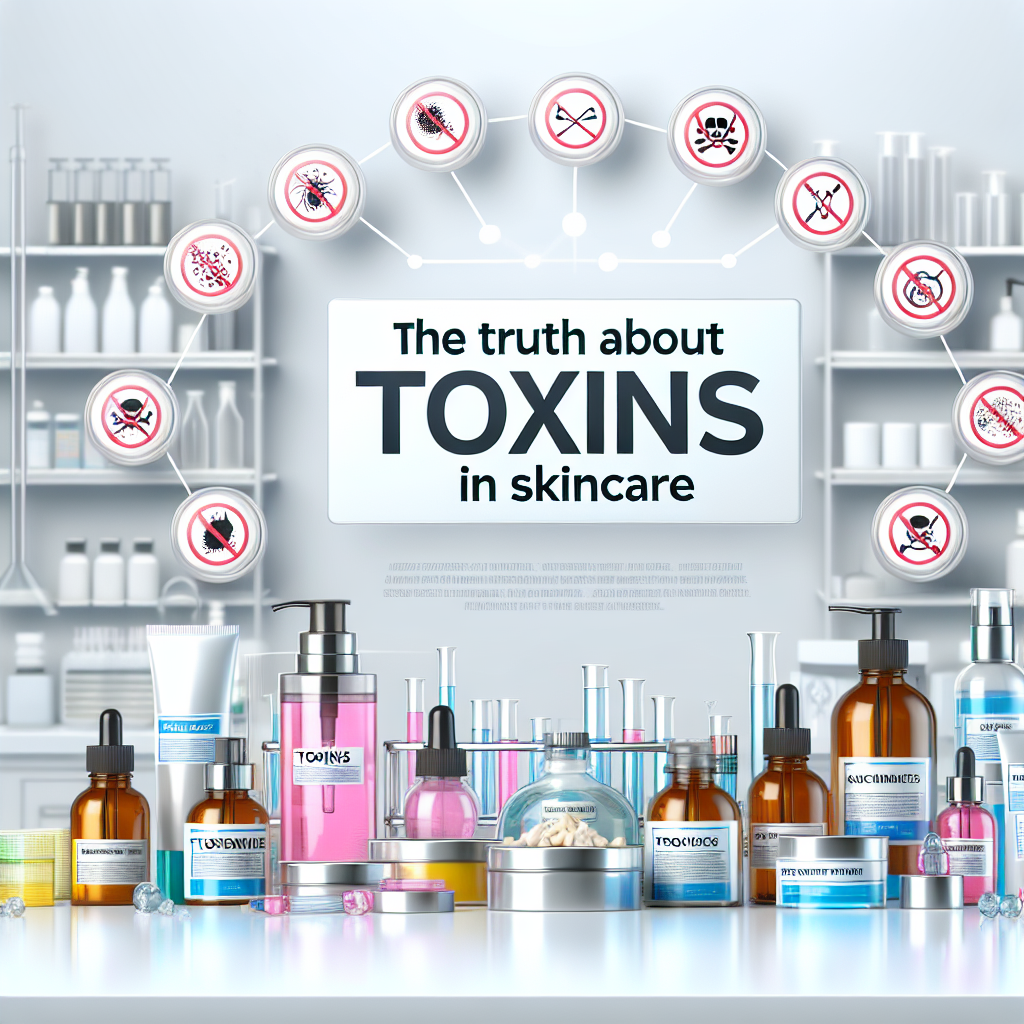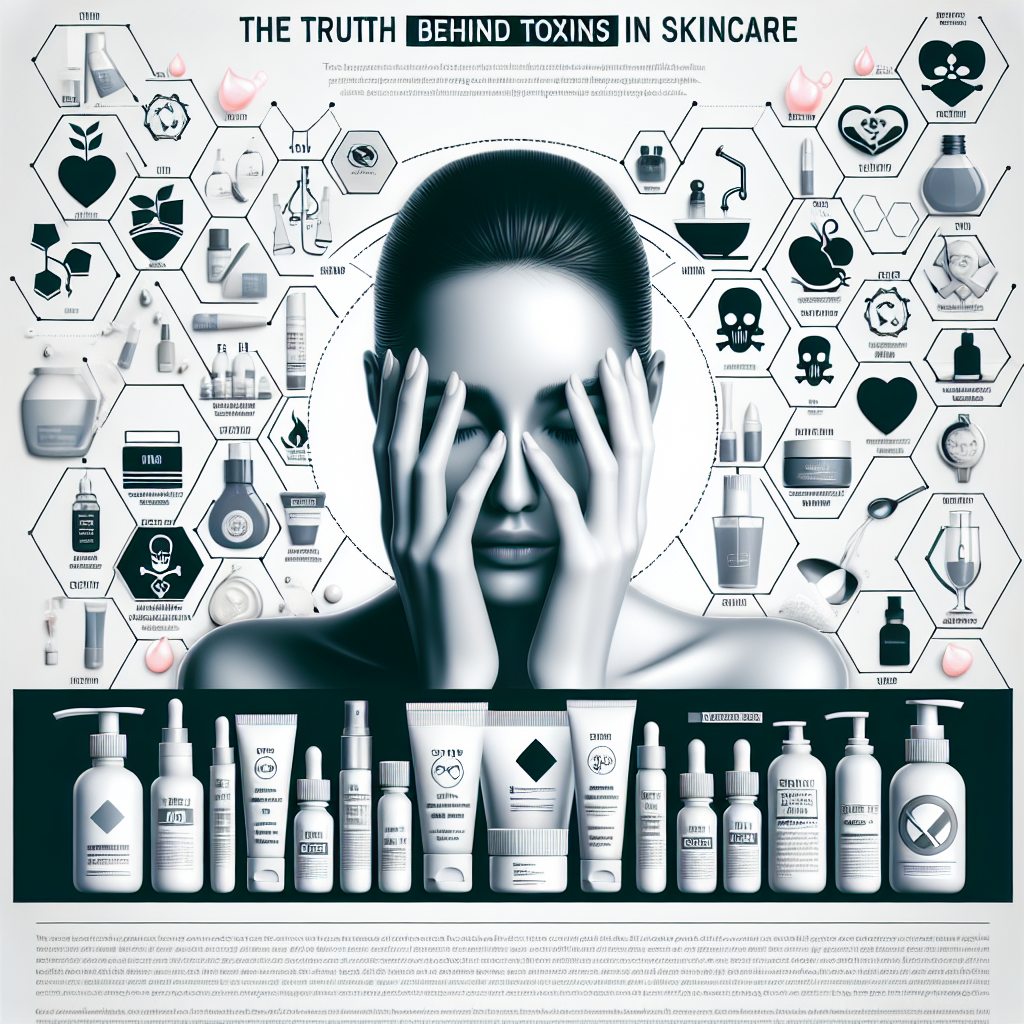The Truth About Toxins In Skincare

Discover the truth about toxins in skincare! Educate yourself on the harmful effects and learn how to choose safer alternatives. Visit My Vibrant Vitality now.
Unmasking the Hidden Toxins in Your Skincare Products
The truth about toxins in skincare is a topic that has been gaining significant attention in recent years. As consumers become more conscious about what they put on their skin, the demand for transparency in the beauty industry has never been higher. Unmasking the hidden toxins in your skincare products is a crucial step towards achieving healthier skin and a healthier lifestyle.
The skin, being the largest organ in the body, absorbs up to 60% of the substances applied to it. This means that the ingredients in your skincare products can directly affect your overall health. Unfortunately, many of these products contain harmful chemicals and toxins that can lead to a variety of health issues, ranging from skin irritation and allergies to hormonal imbalances and even cancer.
Parabens, for instance, are a common preservative found in many skincare products. They are known to mimic estrogen in the body, which can disrupt hormonal balance and potentially lead to reproductive issues. Similarly, phthalates, often used to increase the flexibility and longevity of fragrances, have been linked to endocrine disruption and reproductive toxicity.
Another harmful ingredient to watch out for is formaldehyde, a potent carcinogen that can cause skin irritation and allergic reactions. It is often hidden in the ingredient list under different names, such as DMDM hydantoin, imidazolidinyl urea, and quaternium-15.
Synthetic fragrances, often listed as ‘parfum’ or ‘fragrance’ on the ingredient list, can also pose a risk. They can contain hundreds of different chemicals, many of which have not been tested for safety in personal care products. These fragrances can trigger allergies, migraines, and asthma symptoms.
Moreover, skincare products often contain sulfates, which are used to create a foaming effect. While they may make your cleansers and shampoos feel more luxurious, they can strip the skin of its natural oils, leading to dryness, irritation, and inflammation.
The truth about toxins in skincare is alarming, but the good news is that there are safer alternatives available. Many brands are now offering ‘clean’ skincare products, free from harmful chemicals and toxins. These products use natural and organic ingredients that are not only safe for your skin but also for the environment.
However, it’s important to remember that not all ‘natural’ or ‘organic’ products are created equal. Some may still contain harmful ingredients, so it’s essential to read the ingredient list carefully. Look for products that are certified organic and free from harmful chemicals.
In conclusion, unmasking the hidden toxins in your skincare products is a crucial step towards achieving healthier skin and a healthier lifestyle. By becoming more conscious about what you put on your skin, you can make informed choices that benefit not only your skin but also your overall health. Remember, your skin deserves the best, so choose your skincare products wisely.
The Shocking Truth: Harmful Toxins Lurking in Your Daily Skincare Routine

The truth about toxins in skincare is a topic that has been gaining significant attention in recent years. As consumers become more conscious about what they put on their skin, the shocking truth about harmful toxins lurking in your daily skincare routine is coming to light.
The skin, being the largest organ in the human body, absorbs approximately 60% of what we apply to it. This means that the ingredients in your skincare products can directly enter your bloodstream, bypassing the digestive system that would typically help to filter out harmful substances. This fact underscores the importance of being aware of what we apply to our skin.
Many skincare products on the market today contain a cocktail of chemicals that can be harmful to our health. Parabens, for instance, are a common preservative used in many skincare products. They are known to disrupt hormone function by mimicking estrogen, and excessive estrogen exposure has been linked to breast cancer. Similarly, phthalates, another common ingredient, have been associated with a range of health issues, including hormonal disruptions, birth defects, and reproductive system harm.
Another harmful toxin commonly found in skincare products is formaldehyde, a known carcinogen. It is often hidden in the ingredient list under names like DMDM hydantoin, imidazolidinyl urea, diazolidinyl urea, quaternium-15, bronopol, 5-Bromo-5-nitro-1,3-dioxane, and hydroxymethylglycinate. Formaldehyde-releasing preservatives are used in many cosmetic products to help prevent bacteria growth. This chemical, however, can cause allergic skin reactions and may also be harmful to the immune system.
Moreover, skincare products often contain synthetic colors derived from petroleum or coal tar sources, which are suspected to be a human carcinogen, a skin irritant, and linked to ADHD in children. These synthetic colors are labeled as D&C or FD&C, followed by a color and a number.
Transitioning to the topic of fragrances, it is important to note that the term “fragrance” or “parfum” on a product label represents an undisclosed mixture of various scent chemicals. Fragrance recipes are considered trade secrets, so manufacturers are not required to disclose fragrance chemicals in the list of ingredients. According to the Environmental Working Group (EWG), fragrances are among the top five allergens in the world and can cause allergies, dermatitis, respiratory distress, and potential effects on the reproductive system.
The truth about toxins in skincare is indeed shocking, but the good news is that awareness about these harmful ingredients is growing. Many companies are now producing “clean” skincare products that are free from these harmful toxins. As consumers, it is crucial to read product labels and understand what is in the products we use. There are also many resources available, such as the EWG’s Skin Deep Database, which provides information on the safety of ingredients used in personal care products.
In conclusion, the skincare industry is rife with products containing harmful toxins. However, with increased awareness and the availability of safer alternatives, consumers can make informed choices about what they apply to their skin. The truth about toxins in skincare is a wake-up call for all of us to take our skin health seriously. After all, our skin is not just a barrier, but a gateway to our overall health.
Decoding the Ingredient List: Identifying Toxins in Skincare Products
The truth about toxins in skincare is a topic that has been gaining significant attention in recent years. As consumers become more conscious about what they put on their skin, the demand for transparency in skincare ingredients has increased. This has led to a greater focus on decoding the ingredient list, a crucial step in identifying toxins in skincare products.
The ingredient list on a skincare product can often seem like a foreign language. With long, scientific names that are difficult to pronounce, it can be challenging to understand what exactly you’re applying to your skin. However, with a little knowledge and understanding, you can learn to identify potential toxins and make more informed decisions about your skincare routine.
Firstly, it’s important to understand that not all chemicals are bad. In fact, everything, including water and natural ingredients, is made up of chemicals. The key is to distinguish between safe chemicals and potentially harmful ones. Some chemicals, like parabens and phthalates, have been linked to health issues and are best avoided. Parabens, used as preservatives in many products, have been associated with hormonal disruption. Phthalates, often found in fragrances, have been linked to reproductive and developmental issues.
Another common toxin to look out for is formaldehyde, a known carcinogen. It is often hidden in the ingredient list under different names like DMDM hydantoin, imidazolidinyl urea, diazolidinyl urea, quaternium-15, bronopol, 5-Bromo-5-nitro-1,3-dioxane, and hydroxymethylglycinate. If you see any of these names on your skincare product, it’s best to put it back on the shelf.
Sulfates, such as sodium lauryl sulfate (SLS) and sodium laureth sulfate (SLES), are also worth mentioning. These chemicals are used to create a foaming effect in products like cleansers and shampoos. While they’re not necessarily toxic, they can be harsh and irritating, especially for those with sensitive skin.
It’s also worth noting that just because a product is labeled as “natural” or “organic” doesn’t necessarily mean it’s free from harmful ingredients. Many natural ingredients can be irritating or allergenic, and some organic products may still contain harmful chemicals. Always check the ingredient list, regardless of how the product is marketed.
In addition to these, there are many other potential toxins in skincare products, including synthetic colors, fragrances, and certain types of alcohol. The Environmental Working Group (EWG) has a comprehensive database where you can look up individual ingredients to see their safety ratings.
Decoding the ingredient list can be a daunting task, but it’s an essential step in ensuring the safety and effectiveness of your skincare routine. By educating yourself about potential toxins, you can make more informed decisions and choose products that are not only beneficial for your skin but also for your overall health.
In conclusion, the truth about toxins in skincare is that they are more common than you might think. However, by learning to decode the ingredient list, you can identify these toxins and choose safer, healthier skincare products. It’s a small step that can make a big difference in your skincare routine and your health.